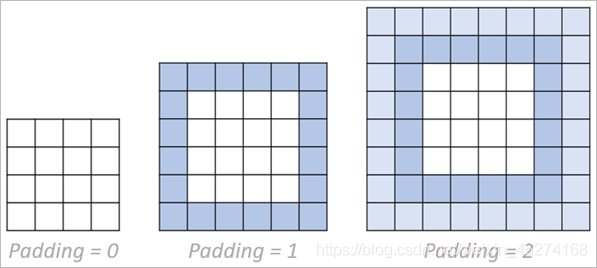
tf.sort函数可以帮我们对张量进行排序.
格式:
tf.sort(
values, axis=-1, direction='ASCENDING', name=None
)
参数:
例子:
# 创建张量0~9, 并打乱顺序 a = tf.random.shuffle(tf.range(10)) print(a) # 从小到大 b = tf.sort(a) # direction="ASCENDING" print(b) # 从大到小 c = tf.sort(a, direction="DESCENDING") print(c)
输出结果:
tf.Tensor([6 3 7 5 4 0 2 9 8 1], shape=(10,), dtype=int32)
tf.Tensor([0 1 2 3 4 5 6 7 8 9], shape=(10,), dtype=int32)
tf.Tensor([9 8 7 6 5 4 3 2 1 0], shape=(10,), dtype=int32)
tf.argsort返回张量的索引排序, 沿给的轴排序.
格式:
tf.argsort(
values, axis=-1, direction='ASCENDING', stable=False, name=None
)
参数:
例子:
# 创建张量0~9, 并打乱顺序 a = tf.random.shuffle(tf.range(10)) print(a) # 从小到大 b = tf.argsort (a) print(b) # 从大到小 c = tf.argsort (a, direction="DESCENDING") print(c)
输出结果:
tf.Tensor([9 4 3 1 2 6 0 5 7 8], shape=(10,), dtype=int32)
tf.Tensor([6 3 4 2 1 7 5 8 9 0], shape=(10,), dtype=int32)
tf.Tensor([0 9 8 5 7 1 2 4 3 6], shape=(10,), dtype=int32)
tf.math.top_k可以帮助我们查找最后一个维度的 k 个最大条目的值和索引.
格式:
tf.math.top_k(
input, k=1, sorted=True, name=None
)
参数:
例子:
# 创建张量0~9, 并打乱顺序, 形状为 3*3 a = tf.reshape(tf.random.shuffle(tf.range(9)), [3, 3]) print(a) # 取top2 b = tf.math.top_k(a, 2) print(b)
输出结果:
tf.Tensor(
[[2 1 4]
[5 7 0]
[8 6 3]], shape=(3, 3), dtype=int32)
TopKV2(values=tf.Tensor: shape=(3, 2), dtype=int32, numpy=
array([[4, 2],
[7, 5],
[8, 6]])>, indices=tf.Tensor: shape=(3, 2), dtype=int32, numpy=
array([[2, 0],
[1, 0],
[0, 1]])>)
tf.pad可以帮我们对一个 tensor 四周进行填充.

格式:
tf.pad(
tensor, paddings, mode='CONSTANT', constant_values=0, name=None
)
参数:
例子:
# pad a = tf.reshape(tf.range(9), [3, 3]) print(a) # 上下左右填充一圈0 b = tf.pad(a, [[1, 1], [1, 1]]) print(b)
输出结果:
tf.Tensor(
[[0 1 2]
[3 4 5]
[6 7 8]], shape=(3, 3), dtype=int32)
tf.Tensor(
[[0 0 0 0 0]
[0 0 1 2 0]
[0 3 4 5 0]
[0 6 7 8 0]
[0 0 0 0 0]], shape=(5, 5), dtype=int32)
tf.tile可以帮助我们实现 tensor 的复制.
格式:
tf.tile(
input, multiples, name=None
)
参数:
例子:
# tile a = tf.reshape(tf.range(9), [3, 3]) print(a) b = tf.tile(a, [2, 2]) print(b)
输出结果:
tf.Tensor(
[[0 1 2]
[3 4 5]
[6 7 8]], shape=(3, 3), dtype=int32)
tf.Tensor(
[[0 1 2 0 1 2]
[3 4 5 3 4 5]
[6 7 8 6 7 8]
[0 1 2 0 1 2]
[3 4 5 3 4 5]
[6 7 8 6 7 8]], shape=(6, 6), dtype=int32)

返回元素为 True 的位置.
格式:
tf.where(
condition, name=None
)
参数:
例子:
# 第一种用法(单参数) mask = tf.constant([[True, True, True], [False, True, True], [True, False, False]]) print(mask) indices = tf.where(mask) print(indices)
输出结果:
tf.Tensor(
[[ True True True]
[False True True]
[ True False False]], shape=(3, 3), dtype=bool)
tf.Tensor(
[[0 0]
[0 1]
[0 2]
[1 1]
[1 2]
[2 0]], shape=(6, 2), dtype=int64)
类似三元运算符的用法.
格式:
tf.where(
condition, x=None, y=None, name=None
)
参数:
例子:
# 第二种用法(三个参数) zeros = tf.zeros([3, 3]) print(zeros) ones = tf.ones([3, 3]) print(ones) mask = tf.constant([[True, True, True], [False, True, True], [True, False, False]]) print(mask) result = tf.where(mask, zeros, ones) print(result)
输出结果:
tf.Tensor(
[[0. 0. 0.]
[0. 0. 0.]
[0. 0. 0.]], shape=(3, 3), dtype=float32)
tf.Tensor(
[[1. 1. 1.]
[1. 1. 1.]
[1. 1. 1.]], shape=(3, 3), dtype=float32)
tf.Tensor(
[[ True True True]
[False True True]
[ True False False]], shape=(3, 3), dtype=bool)
tf.Tensor(
[[0. 0. 0.]
[1. 0. 0.]
[0. 1. 1.]], shape=(3, 3), dtype=float32)
使用索引更新张量.

格式:
tf.scatter_nd(
indices, updates, shape, name=None
)
参数:
例子:
# scatter_nd indices = tf.constant([[4], [3], [1], [7]]) print(indices) updates = tf.constant([9, 10, 11, 12]) print(updates) shape = tf.constant([8]) print(shape) result = tf.scatter_nd(indices, updates, shape) print(result)
输出结果:
tf.Tensor(
[[4]
[3]
[1]
[7]], shape=(4, 1), dtype=int32)
tf.Tensor([ 9 10 11 12], shape=(4,), dtype=int32)
tf.Tensor([8], shape=(1,), dtype=int32)
tf.Tensor([ 0 11 0 10 9 0 0 12], shape=(8,), dtype=int32)
到此这篇关于TensorFlow2基本操作之 张量排序 填充与复制 查找与替换的文章就介绍到这了,更多相关TensorFlow2基本操作内容请搜索脚本之家以前的文章或继续浏览下面的相关文章希望大家以后多多支持脚本之家!